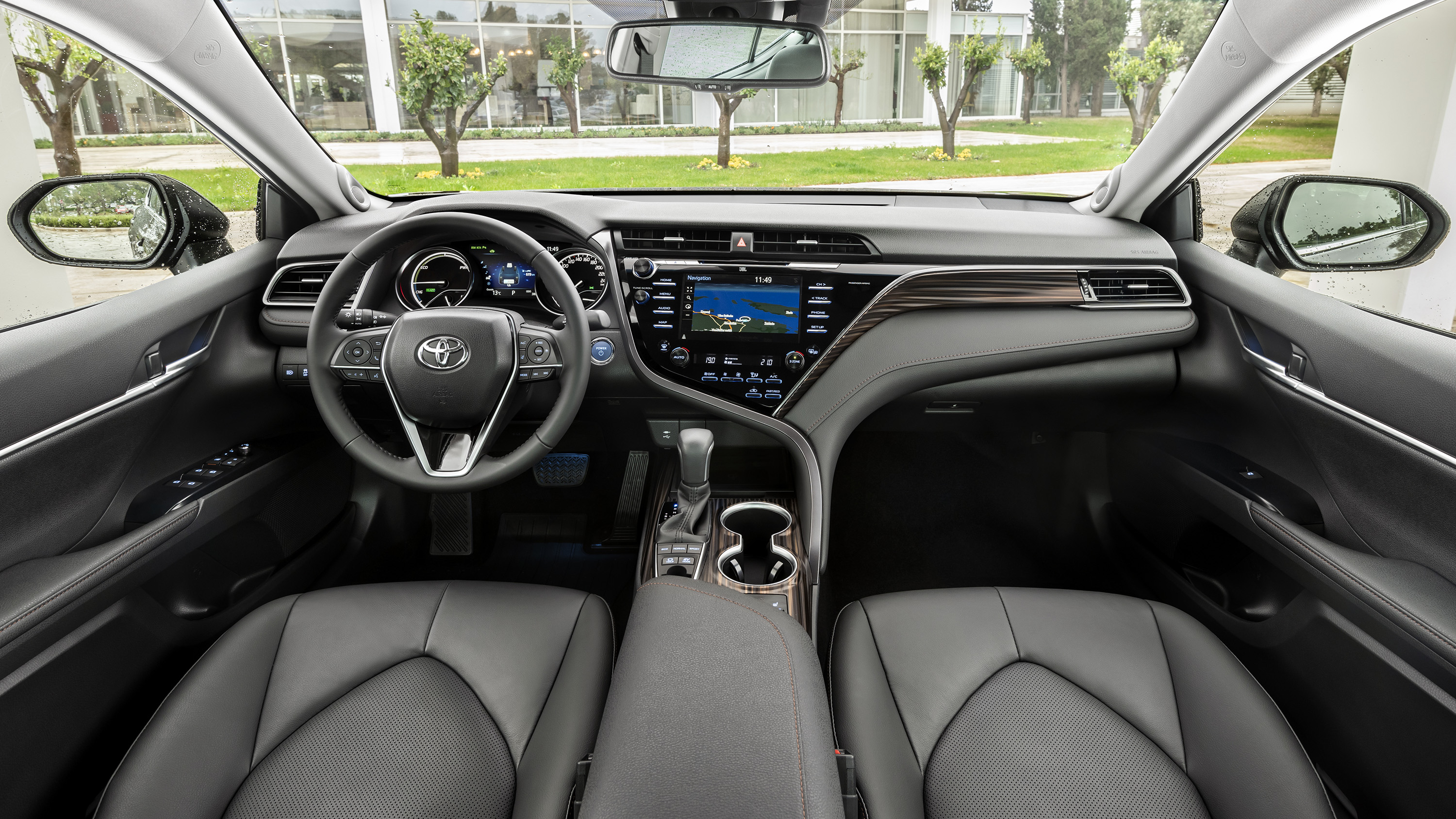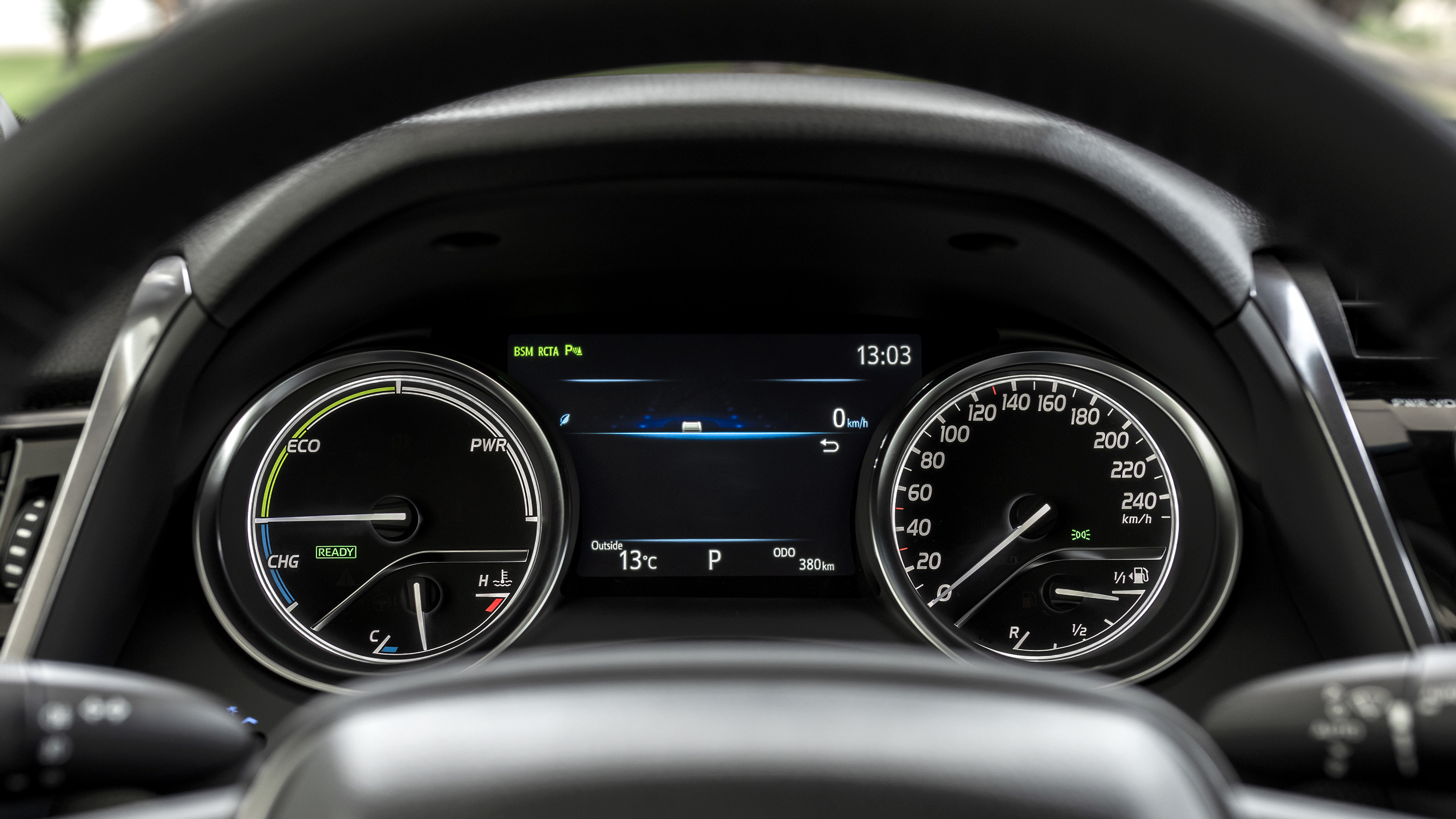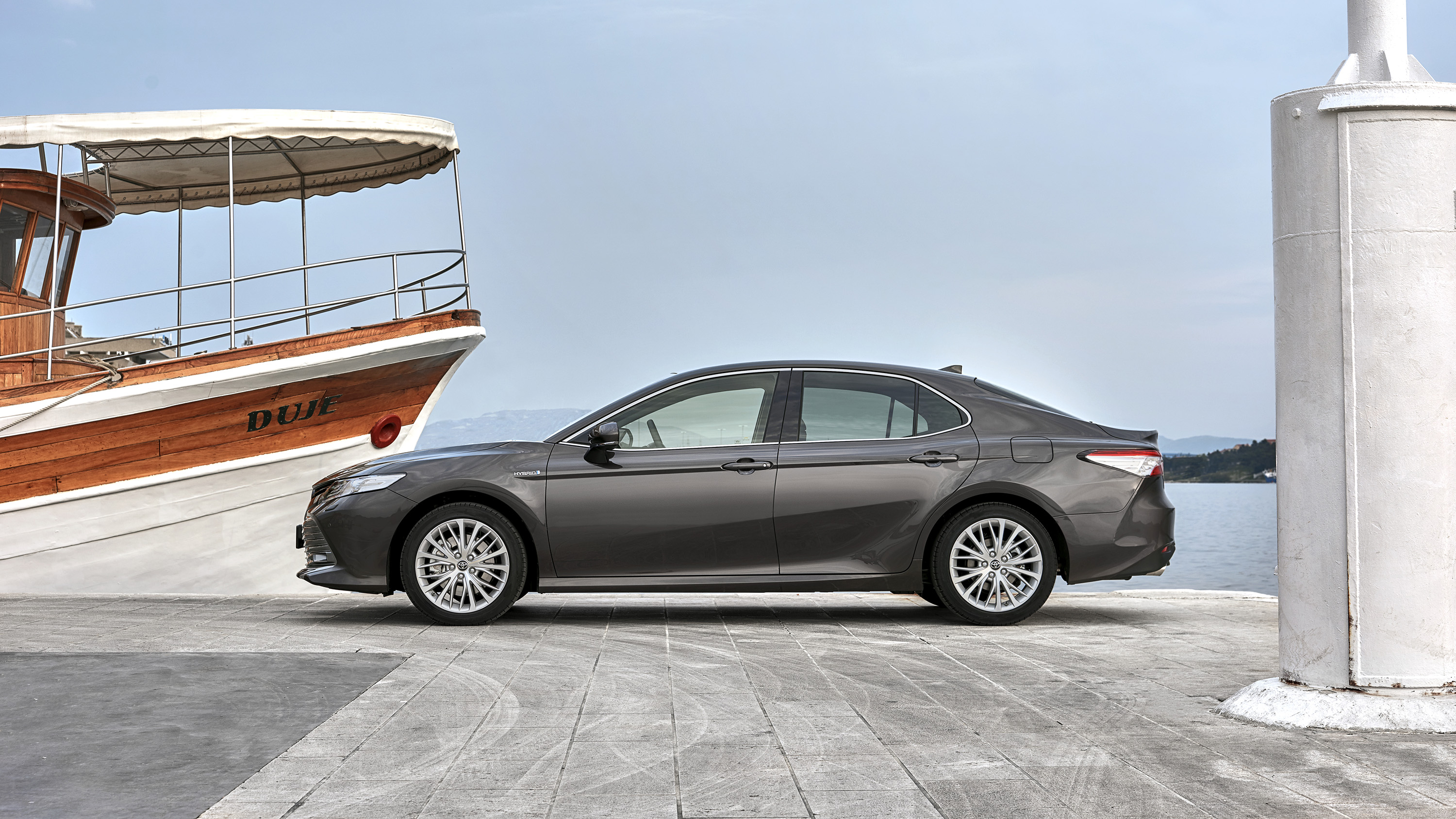
Buying
What should I be paying?
Whatever you think of Toyota’s hybrid system, there’s no doubt it delivers economically. Assuming you do the right kind of driving. If you don’t have access to a plug (or simply can’t be bothered to trail cables over your driveway), prohibiting you from getting the best from your PHEV, it’s a good way of cheating the system, even if the claimed numbers aren’t quite good enough to qualify it for the best tax breaks.
Toyota’s hybrid system works the opposite way around to normal internal combustion cars, in that it’s at its most efficient in stop/start traffic. Why d’you think Uber drivers love them some much? Meanwhile the CVT does double-duty as a transmission and an active deterrent from driving swiftly. Toyota claims north of 50mpg combined and high 40s is certainly doable.
Camrys on the little 17in wheel dip under the 100g/km CO2 threshold, too. Just. In all, this will be a very cheap car to run given its size.
Speaking of little wheels - the Camry only comes in two versions, both with the hybrid powertrain and stacked with kit (there are basically no options beyond fancy paint). ‘Design’ starts at just under £30k and gives you pretty much everything: alloys, leather, LED headlights, climate control, keyless everything, parking sensors and the Toyota ‘Touch 2’ infotainment system with Bluetooth and DAB.
For an extra £1,300 ‘Excel’ adds more LEDs, wireless phone charging, better parking sensors, blind-spot monitoring and cross-traffic alert. Bigger wheels, too, which marginally increase CO2 emissions.
All Camrys get adaptive cruise control, lane departure warning and autonomous emergency braking with pedestrian detection.
Featured

Trending this week
- Car Review
BMW iX3






